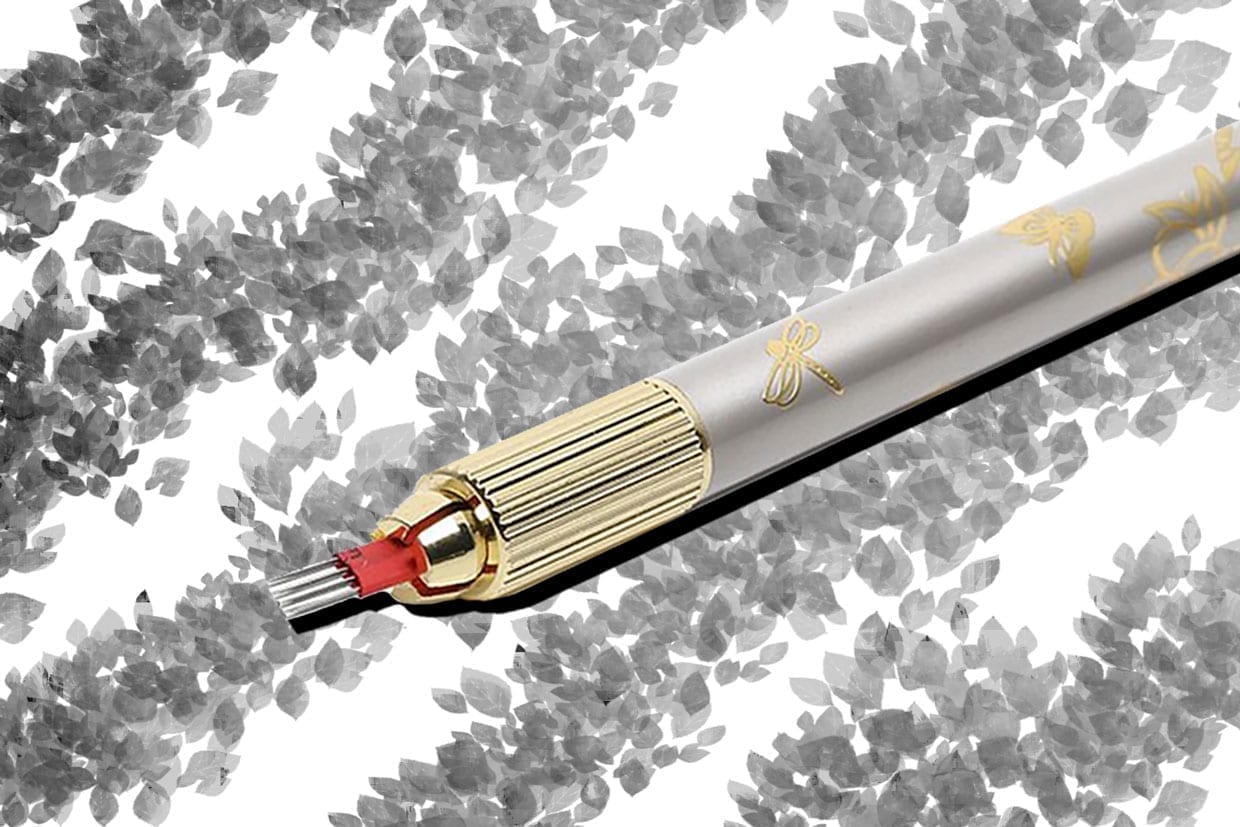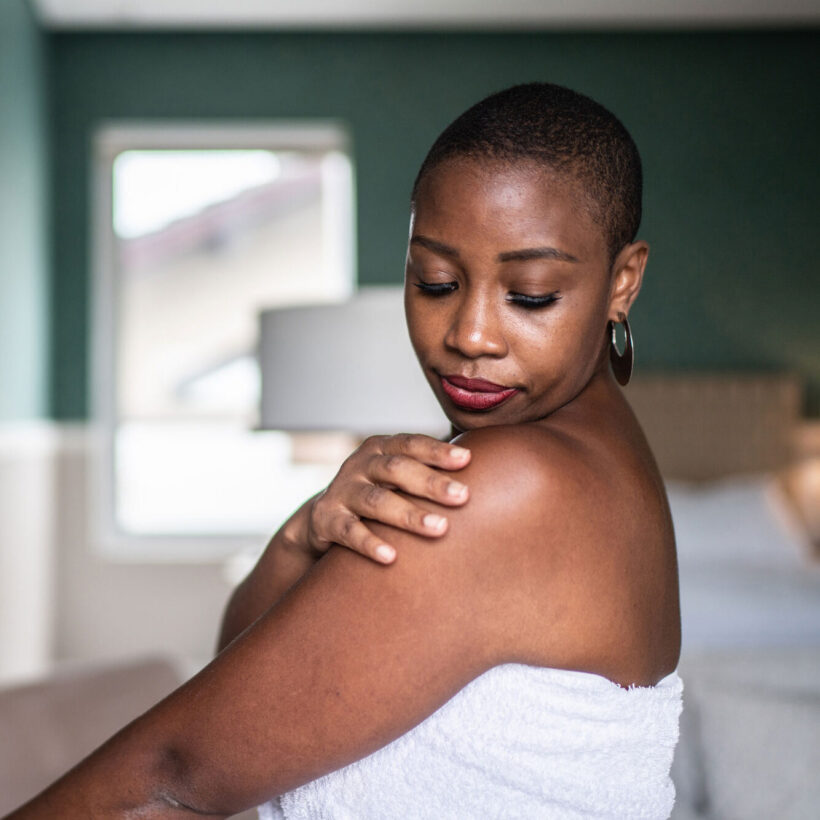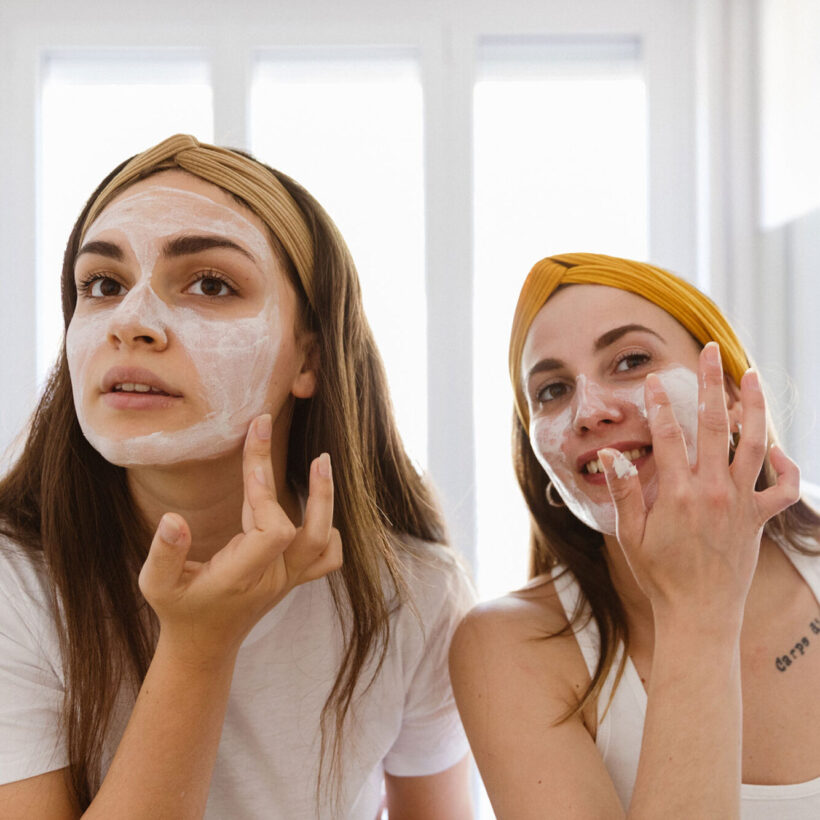Permanent makeup is more common than you might think. Microblading has erupted as a savior to anyone striving for perfect brows without the pencil, and the answer for over-plucked and thinning brows. So it should come as no surprise that the needle has moved from the brows to the hairline. Many are turning to scalp microblading to mask hair loss and baldness.
“There is a need for a solution for density,” says Caleb McGrew, owner of Miami salon SKIN by Caleb. “Microblading [seems] like a good idea because it’s a hot trend and is such a great solution for brows.” But don’t consider running to the salon just yet —McGrew wants people to think twice before booking a treatment. “In the right hands,” he says, “I think [microblading] is the best thing to hit the cosmetic industry since Botox. In the wrong hands, it is tragic.”
What is Microblading?
Microblading is a technique that implants pigmentation into the skin through tiny incisions. Dating back thousands of years, this procedure is like a semi-permanent tattoo that can be applied to different parts of the body such as hairlines and eyebrows. Also known as embroidery or feather touch, microblading adds semi-permanent pigment to the skin which can help reduce the effects of hair loss, balding, thinning brows, and more.
According to the American Hair Loss Association, 40 percent of women and 95 percent of men experience hair loss, and in a world dominated by social media, where influencers are often perceived as perfect, hair loss can lead to anxiety and depression. But for McGrew, scalp microblading is not the solution. “It never heals well,” he says. “Especially with long hair. The ‘hair strokes’ need to flow with the hair. The hair in this region has too much movement. How will it look when the hair is in a ponytail? When it’s down? When wet? The natural hair doesn’t stay stationary so it’s impossible to microblade a good pattern.”
https://www.instagram.com/p/BqTo4l8Fhsg/
Scalp Micropigmentation
There are other options available, McGrew points out, for thinning hairlines or those looking to create the illusion of fuller, thicker hair. Instead of microblading, look into micropigmentation, which mimics hair follicles. So, what does this mean? Instead of mimicking a strand of hair like microblading —which will not be able to imitate the movement of hair —micropigmentation can create an impression of density with an appearance of more follicles on the scalp, he says. Like microblading, micropigmentation is a type of tattoo, but instead of creating hairlike strokes, with micropigmentation the pigment is injected into the scalp so tiny dots are placed under the epidermal layer of the skin.
For those needing more convincing, McGrew encourages a search on healed pictures. “Ask the artist to show you how it looks healed,” he says. “I suspect seeing those images will change your mind.”







